
Glendalough: Ireland's Serene Valley of Two Lakes
Discover Glendalough, Ireland's enchanting valley of two lakes, rich with ancient history, scenic trails, and the serene beauty of Wicklow Mountains National Park.
Nestled in the heart of County Wicklow, Glendalough is a gem of natural beauty and ancient history. Known as the 'Valley of the Two Lakes,' this enchanting destination captivates visitors with its serene landscapes and rich cultural heritage. The valley is home to a 6th-century monastic settlement founded by St. Kevin, which includes well-preserved ruins such as a round tower, churches, and a cathedral. The mystical atmosphere of these ancient structures, set against the backdrop of lush forests and tranquil lakes, offers a glimpse into Ireland's spiritual past. Glendalough's natural scenery is just as compelling as its history. The valley is crisscrossed with scenic walking trails that cater to all levels of hikers. The popular Spinc and Glenealo Valley route provides breathtaking views of the upper lake and surrounding mountains. For those seeking a more leisurely experience, the lakeside walks offer a peaceful retreat with stunning vistas. Wildlife enthusiasts will also find much to admire, as the area is a haven for birdwatching and spotting native Irish fauna. In addition to its historical and natural allure, Glendalough is also a gateway to the Wicklow Mountains National Park. This expansive park offers a myriad of outdoor activities, from rock climbing to fishing, making it an ideal destination for adventure seekers. Whether you're drawn by the allure of ancient ruins, the call of the wild, or simply the desire for a tranquil escape, Glendalough promises an unforgettable experience that captures the essence of Ireland's timeless charm.
Local tips in Glendalough
- Wear comfortable walking shoes; the terrain can be uneven, especially on hiking trails.
- Visit early in the morning or late in the afternoon to avoid crowds and enjoy a more peaceful experience.
- Bring a picnic to enjoy by the lakes; there are plenty of scenic spots for a relaxing meal.
- Check the weather forecast and dress in layers; the weather can change rapidly in the mountains.
- Don't miss the Visitor Centre for a deeper understanding of the monastic site and its history.
Glendalough: Ireland's Serene Valley of Two Lakes
Nestled in the heart of County Wicklow, Glendalough is a gem of natural beauty and ancient history. Known as the 'Valley of the Two Lakes,' this enchanting destination captivates visitors with its serene landscapes and rich cultural heritage. The valley is home to a 6th-century monastic settlement founded by St. Kevin, which includes well-preserved ruins such as a round tower, churches, and a cathedral. The mystical atmosphere of these ancient structures, set against the backdrop of lush forests and tranquil lakes, offers a glimpse into Ireland's spiritual past. Glendalough's natural scenery is just as compelling as its history. The valley is crisscrossed with scenic walking trails that cater to all levels of hikers. The popular Spinc and Glenealo Valley route provides breathtaking views of the upper lake and surrounding mountains. For those seeking a more leisurely experience, the lakeside walks offer a peaceful retreat with stunning vistas. Wildlife enthusiasts will also find much to admire, as the area is a haven for birdwatching and spotting native Irish fauna. In addition to its historical and natural allure, Glendalough is also a gateway to the Wicklow Mountains National Park. This expansive park offers a myriad of outdoor activities, from rock climbing to fishing, making it an ideal destination for adventure seekers. Whether you're drawn by the allure of ancient ruins, the call of the wild, or simply the desire for a tranquil escape, Glendalough promises an unforgettable experience that captures the essence of Ireland's timeless charm.
When is the best time to go to Glendalough?
Iconic landmarks you can’t miss
Glendalough Cathedral
Discover the historic Glendalough Cathedral, a stunning medieval site nestled in the breathtaking Wicklow Mountains of Ireland.
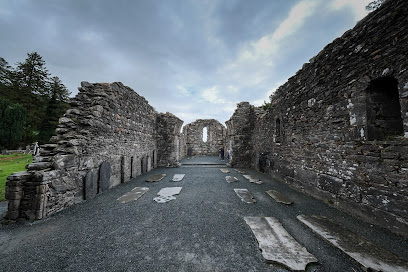
Glendalough Visitor Centre
Immerse yourself in the stunning landscapes and rich heritage at Glendalough Visitor Centre in County Wicklow, Ireland.

Glendalough Roundtower
Explore the historic Glendalough Roundtower amidst stunning landscapes and rich Irish heritage in the heart of County Wicklow.

St. Kevin's Bed
Experience the serene beauty and historical significance of St. Kevin's Bed in Glendalough, a captivating landmark steeped in Irish heritage and natural wonder.

St. Kevin's Church
Explore the captivating history and breathtaking landscapes at St. Kevin's Church, a stunning historical landmark in Co. Wicklow, Ireland.
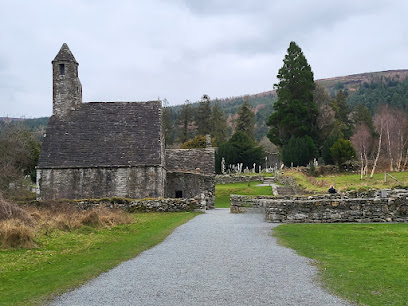
Temple-Na-Skellig
Explore Temple-Na-Skellig in Glendalough, a historical landmark showcasing Ireland's rich monastic heritage amidst breathtaking natural beauty.
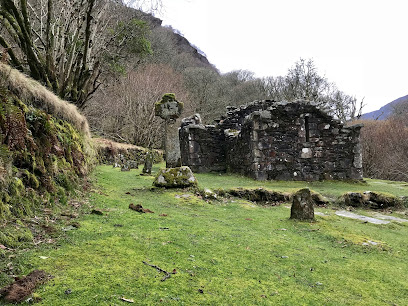
The Gateway
Discover the enchanting charm of The Gateway, a historical landmark in Co. Wicklow, where Ireland's rich heritage meets breathtaking natural beauty.
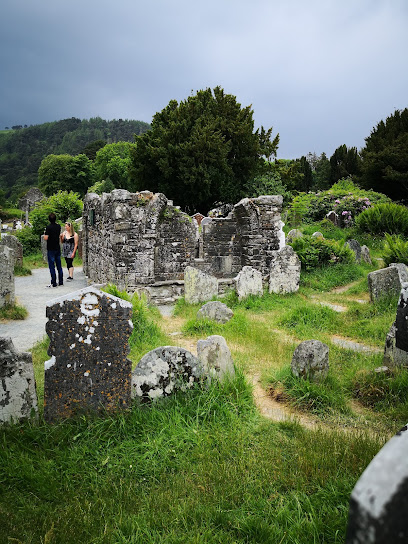
The Priest's House
Discover the charm and history of The Priest's House in Co. Wicklow, a serene landmark that showcases Ireland's rich ecclesiastical heritage.
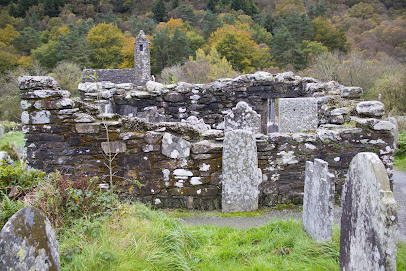
Monasterio de San Kevin
Explore the Monasterio de San Kevin in Glendalough, a serene historical landmark with breathtaking views and rich spiritual heritage amidst the Wicklow Mountains.
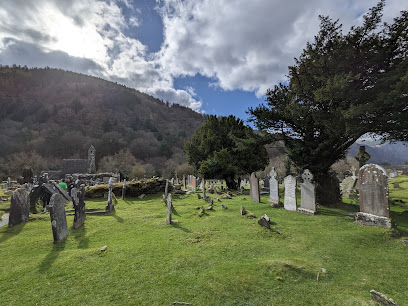
Unmissable attractions to see
Killiney Hill Park
Experience the breathtaking views and tranquil nature of Killiney Hill Park, a hidden gem near Dublin perfect for outdoor enthusiasts and families alike.
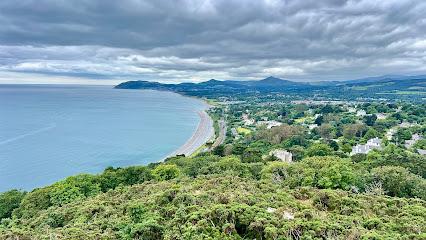
Iveagh Gardens
Experience the tranquil beauty and historical charm of Iveagh Gardens, a hidden gem in the heart of Dublin, perfect for relaxation and exploration.
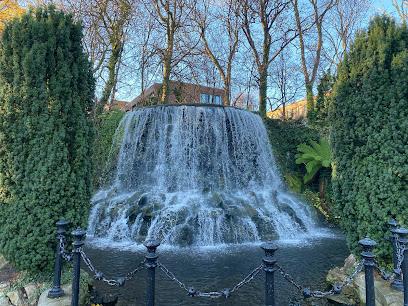
Russborough House & Park
Explore the architectural marvel and stunning landscapes of Russborough House & Park in Co. Wicklow, a perfect blend of history, art, and nature.
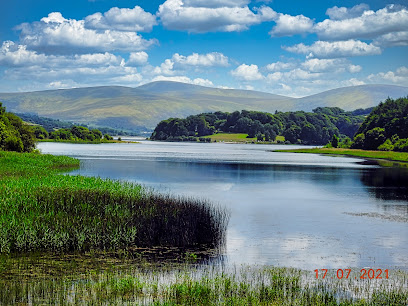
The Dining Room at Fallon & Byrne
Experience the best of Irish cuisine at The Dining Room at Fallon & Byrne, where culinary excellence meets a warm, inviting atmosphere.

The Blue Light
Discover the essence of Irish hospitality at The Blue Light Pub, where breathtaking views and vibrant atmosphere await you in Dublin.
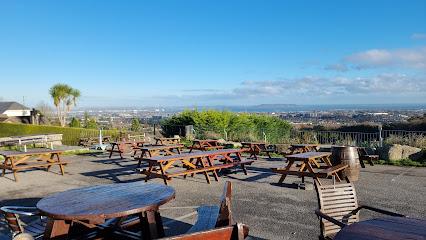
Irish National War Memorial Gardens
Explore the serene Irish National War Memorial Gardens in Dublin, a tribute to valor and beauty amidst historical significance.
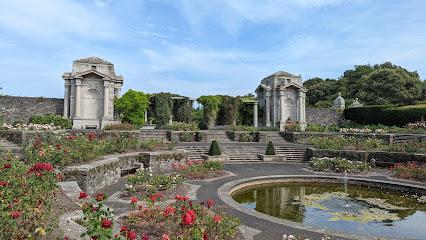
The Oval Bar
Experience the vibrant atmosphere of The Oval Bar in Dublin, where traditional Irish charm meets modern conviviality, perfect for food and drink lovers.
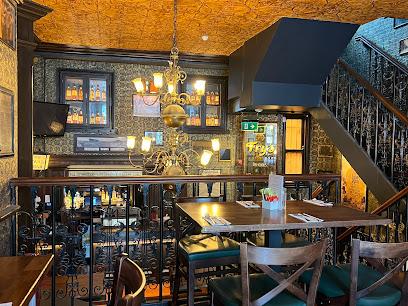
Poolbeg Lighthouse
Explore the historic Poolbeg Lighthouse, a stunning maritime landmark offering scenic walks and breathtaking views of Dublin Bay.
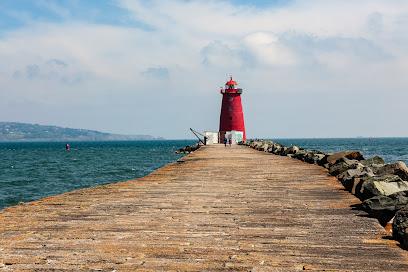
Abbey Theatre
Discover the Abbey Theatre, Ireland's national theatre, where captivating performances bring Irish culture to life in the heart of Dublin.
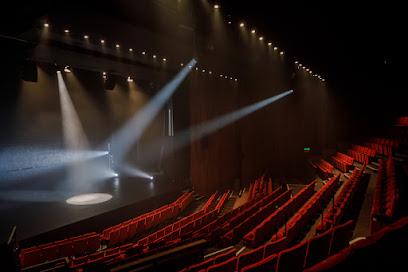
Howth Cliff Walk (Green Route)
Discover breathtaking views and serene nature along the Howth Cliff Walk, a scenic coastal trail just outside Dublin perfect for hiking enthusiasts.

Victor's Way
Explore Victor's Way in Co. Wicklow—a serene sculpture museum and meditation garden that beautifully harmonizes art with nature.
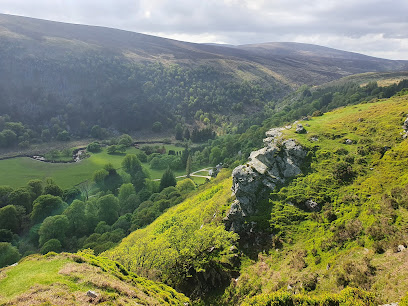
Black Castle
Explore the enchanting Black Castle in County Wicklow, a captivating historical landmark with stunning coastal views and rich Irish heritage.
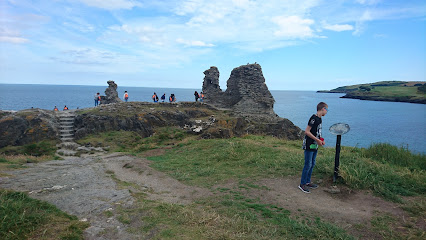
Glasnevin Cemetery
Explore the historic Glasnevin Cemetery in Dublin, a serene final resting place of Ireland's most notable figures, rich in history and beauty.

The Hell Fire Club
Discover the Hell Fire Club: A historic landmark in the Dublin Mountains, offering breathtaking views and a glimpse into Ireland's intriguing past.
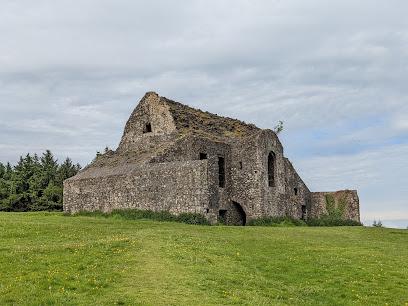
Beyond the Trees Avondale
Explore the breathtaking treetop walk at Beyond the Trees Avondale, a stunning tourist attraction in Co. Wicklow that connects you with nature.
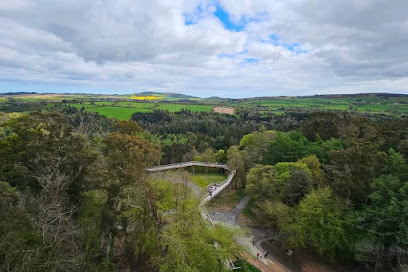
Essential places to dine
Wicklow Heather Restaurant
Experience authentic Irish cuisine at Wicklow Heather Restaurant in stunning County Wicklow - where local flavors meet breathtaking views.
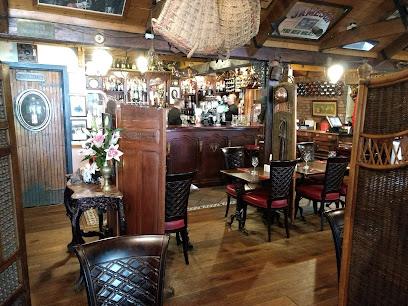
Lynhams of Laragh
Discover comfort and authentic Irish hospitality at Lynhams of Laragh, your gateway to exploring County Wicklow's breathtaking landscapes.

The Glendalough Hotel
Experience tranquility at The Glendalough Hotel amidst stunning landscapes and rich history in County Wicklow.
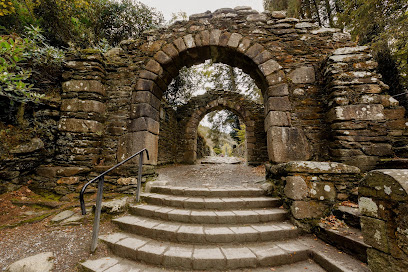
Byrne & Woods Bar & Restaurant
Discover the flavors and warmth of Irish hospitality at Byrne & Woods Bar & Restaurant in beautiful Co. Wicklow.
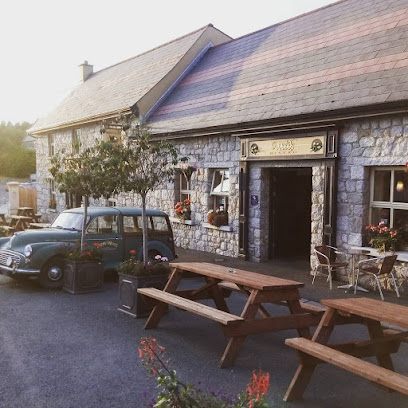
Glendalough Cafe
Experience the best of Wicklow at Glendalough Cafe - where great food meets breathtaking scenery.
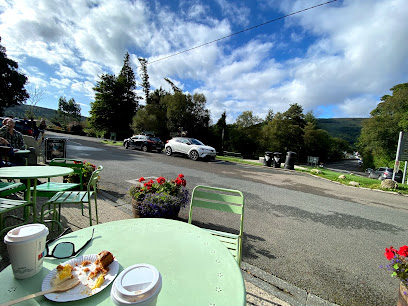
Roundwood Inn
Discover the charm of Roundwood Inn: where traditional Irish cuisine meets warm hospitality in the heart of Ireland.
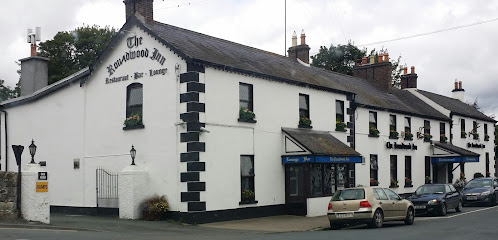
Casey's Bar & Bistro
Discover delicious dining at Casey's Bar & Bistro in Glendalough – where local flavors meet stunning natural beauty.
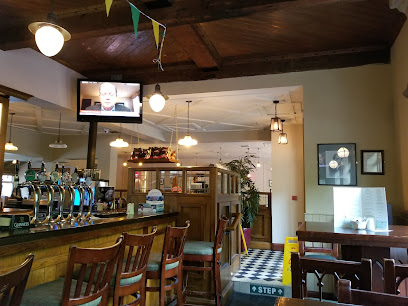
St. Kevin’s Kitchen
Discover the flavors of Ireland at St. Kevin’s Kitchen in Glendalough - your go-to spot for fresh takeout amidst breathtaking scenery.

The Barn, The Glendalough Hotel
Experience exquisite barbecue dining amidst the breathtaking landscapes of Glendalough's Wicklow Mountains.
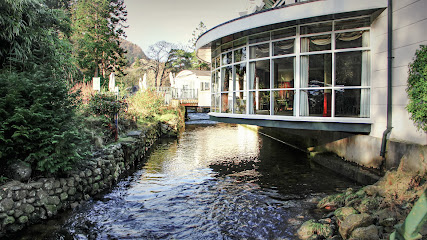
Markets, malls and hidden boutiques
The Roundwood Stores
Explore the vibrant flavors of County Wicklow at The Roundwood Stores, your go-to greengrocer for fresh produce and local delicacies.
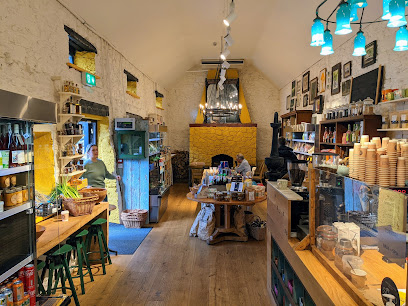
McCoys XL Laragh
Explore McCoys XL Laragh, your ideal convenience store in the heart of Co. Wicklow, offering local products and friendly service.

Glendalough Woollen Mills
Explore Glendalough Woollen Mills for exquisite craftsmanship and authentic Irish woollen goods in the heart of County Wicklow.
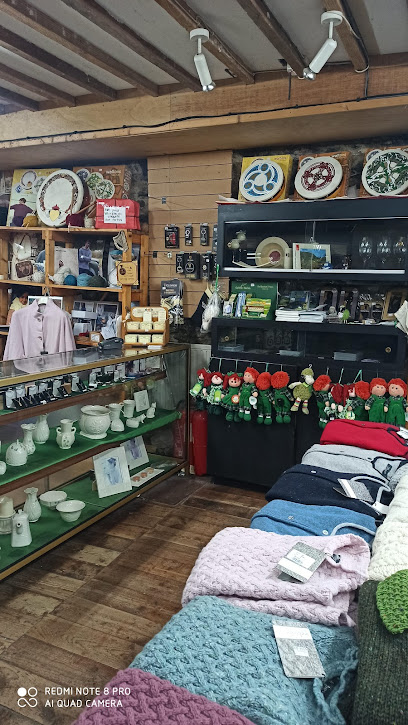
Tweeds & Woollens
Explore Tweeds & Woollens in Glendalough for authentic Irish fashion and craftsmanship, featuring high-quality woollen and tweed clothing.
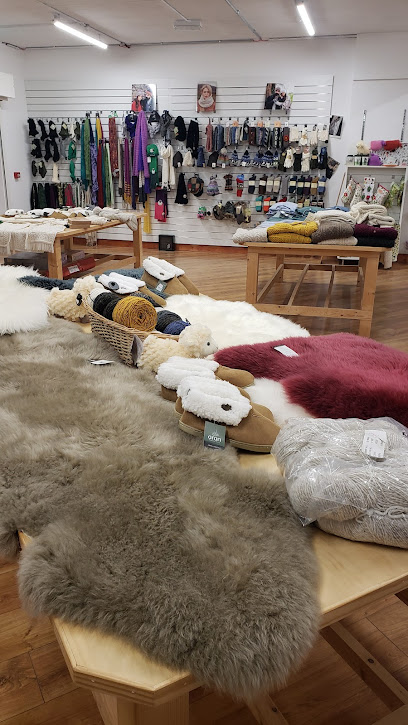
Distrikt by Mia - Interiors, Homeware and Clothing Concept Store
Explore Distrikt by Mia in Wicklow for a unique selection of homeware, clothing, and gifts that embody local craftsmanship and style.
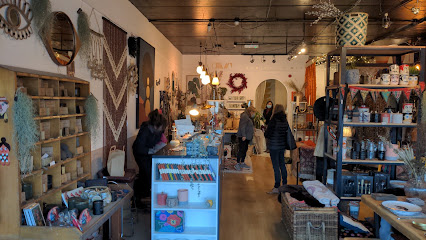
ANNAMOE ANTIQUES /VINTAGE RUGS
Explore Annamoe Antiques for vintage rugs and unique collectibles in the heart of Co. Wicklow, where history meets charm.
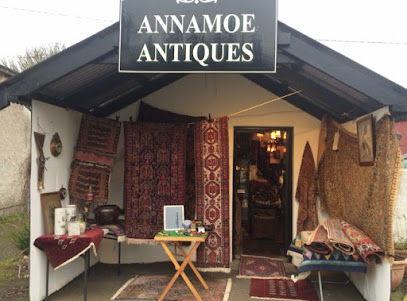
The Rustichouse
Explore a charming antique store in Rathdrum, featuring unique jewelry, vintage books, and delightful novelty items, perfect for treasure hunters.
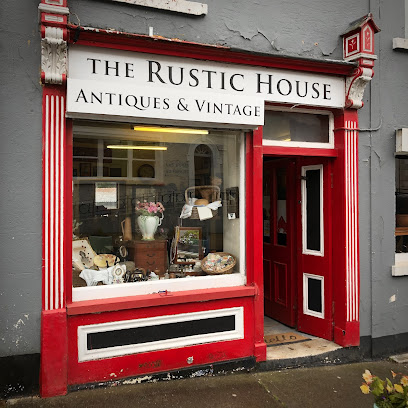
Glendalough Craft Shop
Explore the charm of Glendalough Craft Shop in Co. Wicklow, where local artistry meets breathtaking landscapes for an unforgettable shopping experience.
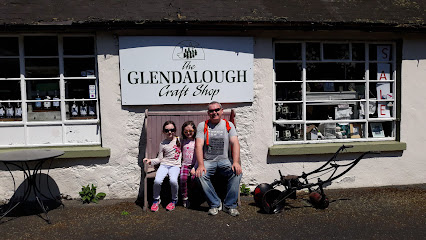
Glendalough gift shop, Co. Wicklow, Ireland.
Explore Glendalough Gift Shop for unique Irish crafts, local souvenirs, and breathtaking views in the heart of County Wicklow.
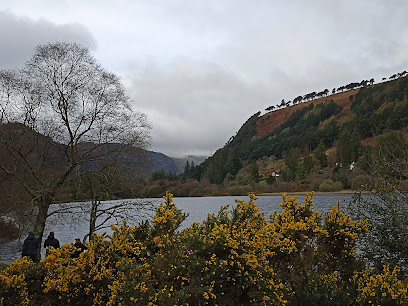
Essential bars & hidden hideouts
Wicklow Heather Restaurant
Experience Irish hospitality and flavor at Wicklow Heather Restaurant, a must-visit stopover amidst Wicklow's stunning landscapes.
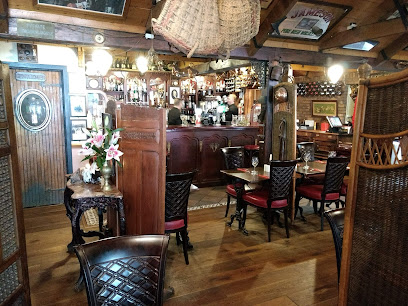
The Glenmalure Lodge
Discover the perfect blend of comfort, traditional Irish cuisine, and stunning nature at Glenmalure Lodge in County Wicklow.

The Bridge Tavern
Discover The Bridge Tavern, a delightful gastropub in Wicklow, offering stunning river views, delicious food, and a cozy atmosphere for every traveler.
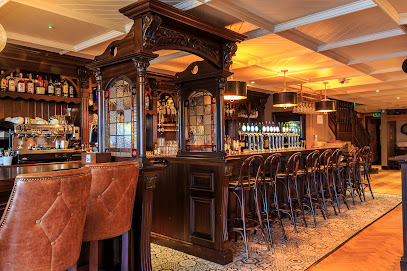
The Brass Fox Wicklow
Discover The Brass Fox Wicklow, where traditional Irish flavors meet modern dining in a cozy gastropub atmosphere.
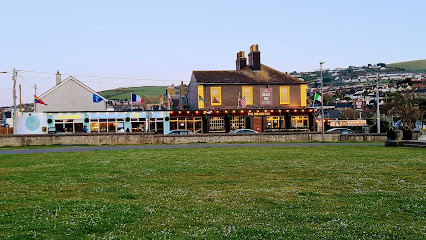
Lynhams of Laragh
Discover the charm of Lynhams of Laragh, a perfect blend of comfort and local hospitality in the heart of Co. Wicklow.

The Hollywood Inn
Discover the charm of The Hollywood Inn, a quintessential Irish pub in Co. Wicklow, offering hearty meals and warm hospitality amidst stunning scenery.
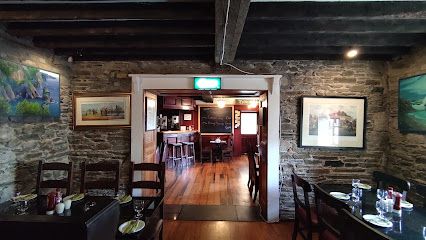
Phil Healy's Pub
Experience the heart of Wicklow at Phil Healy's Pub, where delicious grill cuisine meets genuine Irish hospitality in a cozy setting.
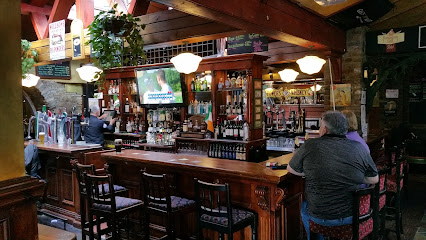
Byrne & Woods Bar & Restaurant
Discover the charm of Byrne & Woods Bar & Restaurant in Roundwood, where traditional Irish flavors meet modern dining in a cozy setting.
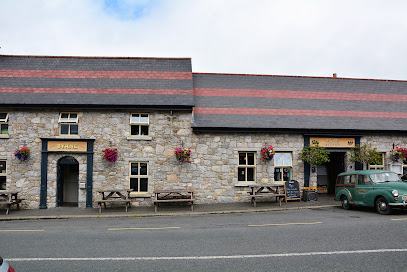
The WoodPecker Bar & Restaurant Ashford
Discover the vibrant atmosphere of The WoodPecker Bar & Restaurant in Ashford, where local flavors meet warm Irish hospitality.
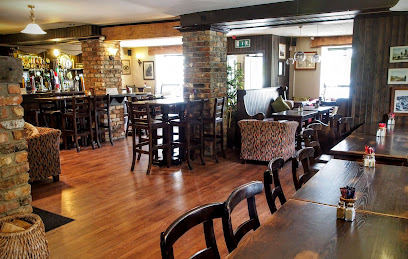
The Dying Cow
Experience the charm of The Dying Cow in Wicklow—an inviting bar with local brews and a vibrant atmosphere for unforgettable moments.

O'Connor's Bar & Lounge, Tinahely, Dwyer Square
Experience the warmth of Irish hospitality at O'Connor's Bar & Lounge, a vibrant spot in the heart of Tinahely offering delicious food and drinks.
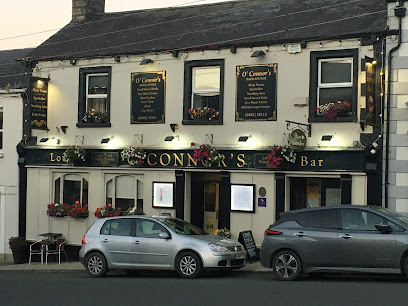
Tóchar House
Experience authentic Irish hospitality at Tóchar House, a cozy bar in the breathtaking Co. Wicklow with local drinks and a vibrant atmosphere.
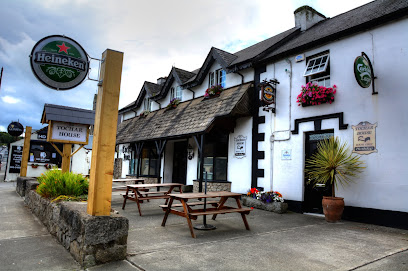
O'Keeffe's Pub
Experience authentic Irish hospitality at O'Keeffe's Pub in Knockananna, Co. Wicklow - a cozy retreat for locals and tourists alike.
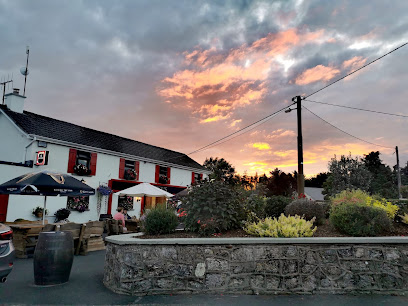
The Cartoon Inn
Experience authentic Irish hospitality at The Cartoon Inn, a cozy bar in Rathdrum with local charm and delightful beverages.
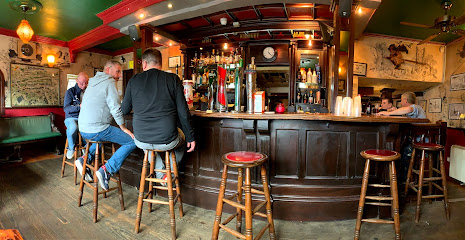
Egans Bar
Discover the welcoming atmosphere of Egans Bar, a traditional pub in Park Bridge, Co. Wicklow, perfect for a relaxing break during your travels.
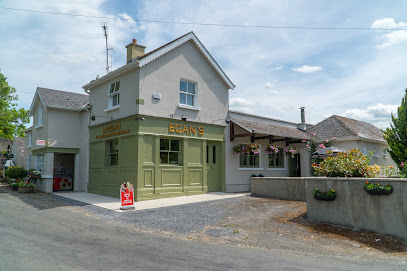
Local Phrases about Glendalough
-
- HelloDia duit
[dee-uh gwit] - GoodbyeSlán
[slawn] - YesTá
[taw] - NoNíl
[neel] - Please/You're welcomeLe do thoil
[leh duh hull] - Thank youGo raibh maith agat
[guh rev mah ag-uht] - Excuse me/SorryMaith thú
[mah hoo] - How are you?Conas atá tú?
[kun-us ah-taw too?] - Fine. And you?Tá mé go maith. Agus tú?
[taw may goh mah. ah-gus too?] - Do you speak English?An bhfuil Béarla agat?
[ahn will bayr-lah ah-gut?] - I don't understandNí thuigim
[nee hug-im]
- HelloDia duit
-
- I'd like to see the menu, pleaseBa mhaith liom an mianú
[bah wah lyum ahn mee-an-oo] - I don't eat meatNí ithim feoil
[nee ih-him foh-il] - Cheers!Sláinte!
[slawn-cheh] - I would like to pay, pleaseBa mhaith liom íoc, le do thoil
[bah wah lyum ee-uck, leh duh hull]
- I'd like to see the menu, pleaseBa mhaith liom an mianú
-
- Help!Cabhair!
[kah-wir] - Go away!Imigh uaim!
[ih-mee oom] - Call the Police!Glan an Garda!
[glan ahn guh-rduh] - Call a doctor!Glan an dochtúir!
[glan ahn duck-too-ir] - I'm lostTáim caillte
[taw-im kahl-cheh] - I'm illTáim tinn
[taw-im chin]
- Help!Cabhair!
-
- I'd like to buy...Ba mhaith liom ceannach...
[bah wah lyum kyawn-ukh] - I'm just lookingNíl ach ag faire
[neel okh egg fah-ruh] - How much is it?Cé mhéad atá air?
[kay vayd ah-taw air?] - That's too expensiveTá sé ró-dháiríre
[taw shay roh-yaw-reh] - Can you lower the price?An féidir leat an praghas a ísealú?
[ahn fay-dur lat ahn prah-guhs ah ee-sha-loo]
- I'd like to buy...Ba mhaith liom ceannach...
-
- What time is it?Cén t-am é?
[kayn tahm ay?] - It's one o'clockTá sé a haon a chlog
[taw shay ah hayn ah khlog] - Half past (10)Leathuair tar éis a deich
[lah-hoo-ir tahr ay-sh ah deh] - MorningMaidin
[mah-jin] - AfternoonTráthnóna
[traw-noh-nuh] - EveningTráthnóna
[traw-noh-nuh] - YesterdayInné
[in-yay] - TodayInniu
[in-yoo] - TomorrowAmárach
[ah-maw-rukh] - 1A haon
[ah hayn] - 2A dó
[ah doh] - 3A trí
[ah tree] - 4A ceathair
[ah kah-her] - 5A cúig
[ah coo-ig] - 6A sé
[ah shay] - 7A seacht
[ah shakht] - 8A hocht
[ah hukht] - 9A naoi
[ah knee] - 10A deich
[ah deh]
- What time is it?Cén t-am é?
-
- Where's a/the...?Cá bhfuil an...?
[kaw will ahn] - What's the address?Cé atá ar an seoladh?
[kay ah-taw air ahn shuh-lah] - Can you show me (on the map)?An féidir leat é a thaispeáint (ar an léarscáil)?
[ahn fay-dur lat ay ah hish-paynt (ahr ahn layr-skawl)] - When's the next (bus)?Cén t-am a thabharfaidh an chéad...
[kayn tahm ah hug-ahr-ee ahn khayd] - A ticket (to ....)Ticead (go dtí ....)
[tick-ad (guh dee)]
- Where's a/the...?Cá bhfuil an...?
History of Glendalough
-
Glendalough, often referred to as 'The Valley of the Two Lakes', was founded in the 6th century by St. Kevin, who sought solitude in this remote and picturesque valley. St. Kevin established a monastic settlement that attracted monks and ascetics, becoming one of the most important ecclesiastical centers in Ireland.
-
Throughout the 8th and 9th centuries, the monastic community at Glendalough expanded. It became a renowned center for learning and pilgrimage, drawing scholars and visitors from across Ireland and beyond. The settlement included a round tower, several churches, and other monastic buildings, many of which still stand today.
-
Like many other Irish monastic sites, Glendalough was not immune to Viking raids. The settlement was attacked multiple times in the 9th and 10th centuries. These raids caused significant destruction but did not extinguish the monastic community's spirit or its importance.
-
In 999 AD, the Battle of Glen Mama took place near Glendalough. This battle was a decisive victory for the High King of Ireland, Brian Boru, against the forces of the Kingdom of Leinster and the Dublin Norse. This victory helped to secure Brian Boru's dominance in Ireland.
-
During the medieval period, Glendalough became one of Ireland's most important pilgrimage sites. Pilgrims would travel from far and wide to visit the relics of St. Kevin and the holy sites within the valley. The 'Pattern of St. Kevin' was a significant pilgrimage route that included various stations of prayer and reflection.
-
By the late 12th century, the political and ecclesiastical landscape of Ireland began to change. The arrival of the Normans and subsequent reforms led to the decline of the traditional monastic settlements. Glendalough's community gradually diminished, and by the 17th century, it had fallen into ruin.
-
In the 19th century, interest in Ireland's medieval heritage led to the restoration of several sites within Glendalough. Efforts were made to preserve the round tower, St. Kevin's Church, and other significant structures. This period marked the beginning of Glendalough's transformation into a heritage and tourism site.
-
Today, Glendalough is a major tourist destination, attracting visitors from around the world. The site is managed by the Office of Public Works, and it offers a combination of historical exploration and natural beauty. Visitors can explore the monastic ruins, walk the trails around the two lakes, and immerse themselves in the serene landscape that once attracted St. Kevin.
Glendalough Essentials
-
Glendalough is located in County Wicklow, Ireland. The nearest international airport is Dublin Airport, approximately 60 kilometers away. From Dublin, you can take a bus or a train to reach Glendalough. Buses operated by St. Kevin's Bus Service run directly from Dublin to Glendalough daily. If you prefer to take a train, you can travel from Dublin to Rathdrum Station and then take a taxi or local bus to Glendalough. The journey from Dublin typically takes around 1.5 to 2 hours.
-
Once in Glendalough, the best way to explore the area is on foot, as many of the key attractions, including the monastic site and walking trails, are within walking distance. For those looking to explore beyond Glendalough, local bus services and taxis are available. Car rentals are also an option if you wish to have more flexibility in your travel schedule. Bicycles can be rented for those who prefer an eco-friendly mode of transport.
-
The official currency in Ireland is the Euro (EUR). Credit and debit cards are widely accepted in Glendalough, including in most hotels, restaurants, and shops. However, it's advisable to carry some cash for smaller establishments and any entry fees at local attractions. ATMs are available in the nearby towns of Laragh and Rathdrum if you need to withdraw cash.
-
Glendalough is generally a safe destination for tourists. The area is well-patrolled and has a low crime rate. Nevertheless, standard safety precautions should be taken. Avoid leaving valuables in plain sight in your vehicle and keep an eye on your belongings in crowded areas. There are no specific high-crime areas targeting tourists, but it's always best to stay alert and aware of your surroundings.
-
In case of an emergency, dial 112 or 999 for immediate assistance. The local Garda (police) station and medical facilities are located in the nearby town of Laragh. It is advisable to have travel insurance that covers medical emergencies. For minor health issues, there are pharmacies in Laragh and Rathdrum where you can purchase over-the-counter medications. Familiarize yourself with the location of the nearest hospital, which is St. Columcille's Hospital in Loughlinstown, approximately 40 kilometers away.
-
Fashion: Do wear comfortable walking shoes and weather-appropriate clothing, as the terrain can be uneven and the weather unpredictable. Avoid overly casual attire when dining in finer establishments. Religion: Do show respect when visiting religious sites. Avoid loud conversations and dress modestly. Public Transport: Do be courteous to fellow passengers and give up your seat to elderly or disabled individuals. Don't eat or drink on public transport. Greetings: Do greet people with a friendly 'hello' or 'hi'. A firm handshake is also common. Eating & Drinking: Do try local dishes and beverages. Don't rush through meals; savor the experience and enjoy the hospitality.
-
To experience Glendalough like a local, visit during the early morning or late afternoon when the crowds are thinner. Pack a picnic and enjoy it by the Upper Lake for a serene experience. Engage with local guides who can offer rich insights into the history and culture of the area. Don't miss the lesser-known trails and the Poulanass Waterfall for a more secluded and peaceful hike. Check local event listings for any festivals or events happening during your visit.
Nearby Cities to Glendalough
-
Things To Do in Dublin
-
Things To Do in Kilkenny
-
Things To Do in Wexford
-
Things To Do in Drogheda
-
Things To Do in Waterford
-
Things To Do in Athlone
-
Things To Do in Limerick
-
Things To Do in Port St Mary
-
Things To Do in Port Erin
-
Things To Do in Castletown
-
Things To Do in Ballasalla
-
Things To Do in Peel
-
Things To Do in Douglas
-
Things To Do in Ennis
-
Things To Do in Belfast











